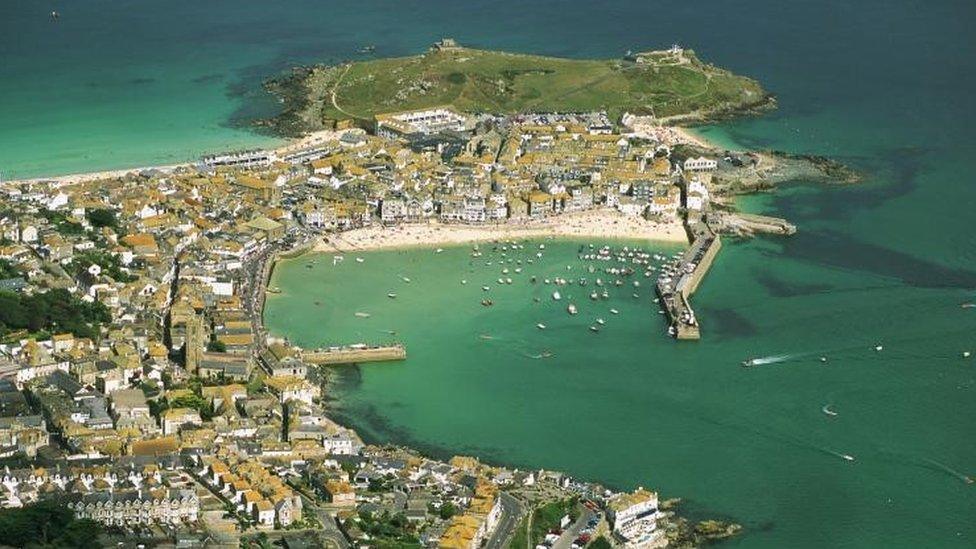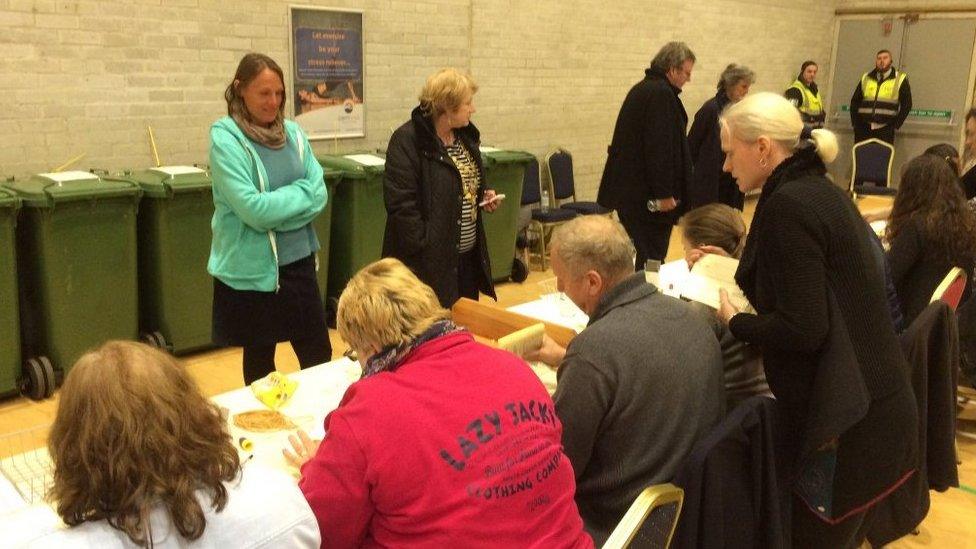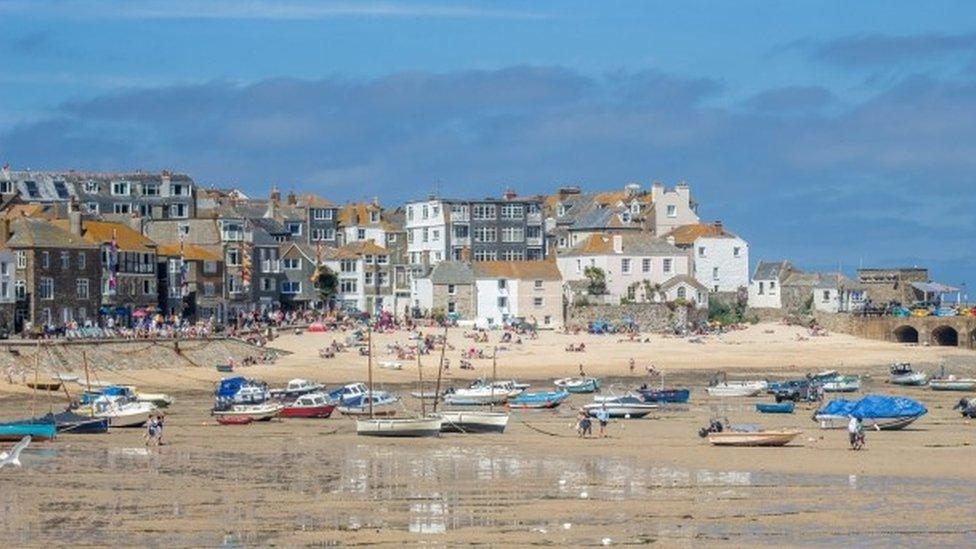St Ives second homes plan challenged in court
- Published

A referendum was held among residents of St Ives after a surge in second home ownership
Plans to stem the tide of second homes in St Ives, Cornwall, could be scrapped if a legal challenge is successful.
In May more than 80% of residents voted for a neighbourhood plan, which included a clause restricting new housing for full-time residents only.
A Penzance architectural firm has challenged Cornwall Council's decision to allow the referendum to go ahead.
A High Court hearing at Bristol Civil Justice Centre is ongoing to decide if there should be a judicial review.
More on the St Ives legal challenge and other Devon and Cornwall news
Under the government's 2011 Localism Act - aimed at devolving decision-making powers - if more than 50% of people voting on neighbourhood plan referendum support it, the plan carries "real legal weight" and the local planning authority must bring in into force.
One of the points RLT Built Environment Ltd is basing its challenge on is the "principal residency" policy which says any new homes built have to be lived in full-time.

Votes for the second homes referendum were counted in Carn Brea
It claims that policy is an attack on the town's two main industries - tourism and construction.
Cornwall Council, which oversaw the referendum for St Ives Town Council, said it was confident the correct process had been followed and it would be "robustly defending" its position.
The ban, which is part of the St Ives Area Neighbourhood Development Plan, external, came after the number of second homes in St Ives topped 25% of the total housing stock.
Christopher Balch, professor of planning at Plymouth University, said: "These little referendums are again local people saying, 'Hold on a minute, this isn't fair'. It isn't fair that people born and raised places like St Ives can't afford to live there.
"Everyone will be waiting to see how effective this policy is."
A similar policy has been adopted in the Cumbian town of Keswick, where about 30% of properties are either second homes or holiday homes.
It means the property must be sold to a person who is employed locally, external or people who have lived locally for three years or more.
Keswick town councillor David Burn said this was already having a positive impact.
"What we do have in Keswick is a shortage of affordable homes for youngsters. But any new build has a local occupancy clause on it," he said.
Roger Harding, from the charity Shelter, said local communities such as St Ives were being threatened by a "severe drought" of genuinely affordable homes.
"The long-term solution to restore stability and allow people to stay close to the communities they know and love is for local and national government to invest in building homes that ordinary families can actually afford to rent or buy," he said.
- Published6 May 2016

- Published4 April 2016
